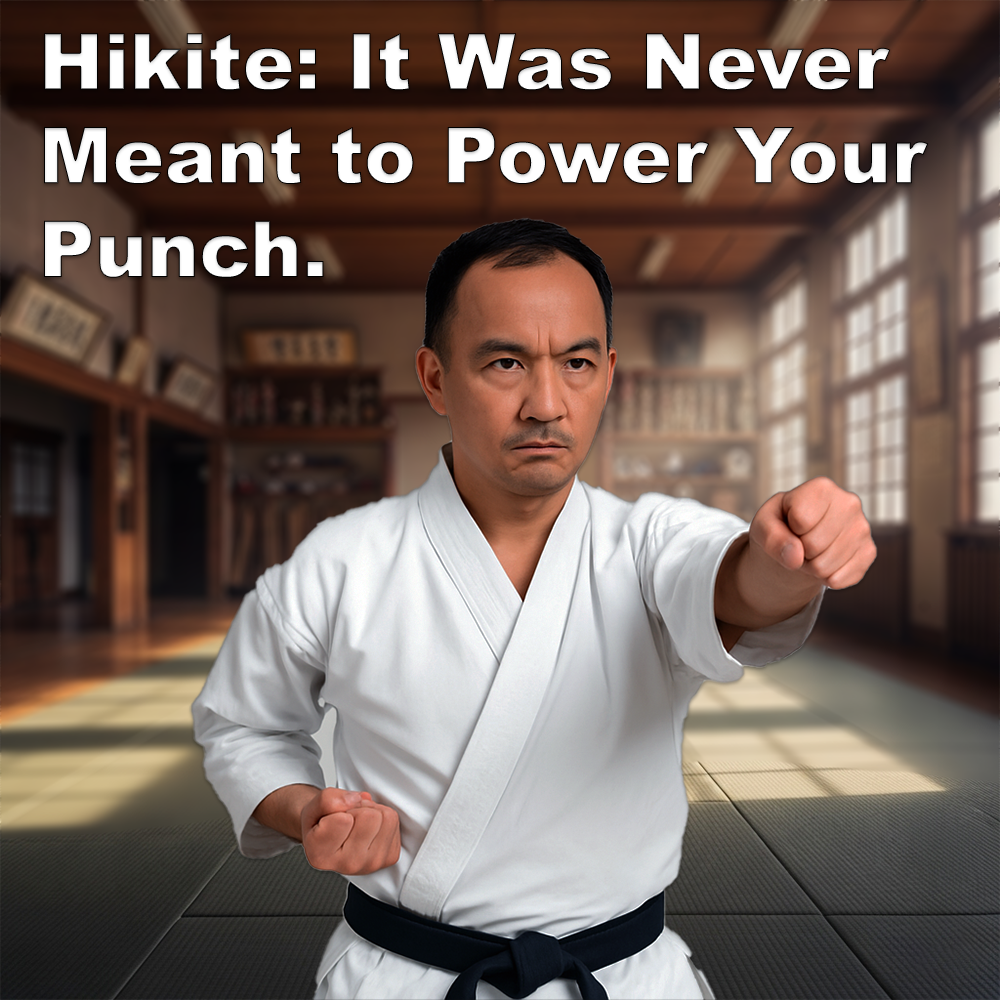
(Approx 2 minute 15 second read)
I was recently asked this question: “Since your piece on not throwing punches from a chambered position, I have wondered if you have modified your katas?”
.
No, I still perform kata as close to the original form as possible. That’s how they were created – at least as far as we know – so I see no reason to change them.
.
However, it’s in the application where things need to adapt. The ‘chamber’, as many describe it – full hikite – isn’t about adding power to a strike; it’s about pulling or controlling something. That’s what the word translates to. So while I may not be “throwing punches from a chambered position”, I keep the kata itself intact.
.
It’s not difficult to clear this one up if you understand the Japanese word itself. Hikite means “pulling hand”. It’s not about power generation or prepping for combinations – the clue is in the name.
.
Of course, in modern karate – step-kumite, sport, etc. – returning the hand tightly to the hip or floating rib is seen as the height of good form.
.
Still, the belief that this movement adds power to the punch keeps resurfacing. You’d think the evidence would have buried this one by now.
.
Retracting one arm does not make the other move faster or hit harder.
.
Some invoke Newton’s Third Law – “For every action, there is an equal and opposite reaction” – as justification for pulling back the opposite arm. But this isn’t how human body mechanics work.
.
In a recent article, I mentioned the Okinawan term meotode (husband and wife hands) – the use of both hands together. This, again, hints at the real use of the “pulling hand”.
.
Karate was developed for unarmed combat. We should all know this by now. And in such combat, it only makes sense to use all available tools to finish the job quickly and efficiently.
.
Not long ago, a 9th dan chastised my wife – a 6th dan herself – for not holding her chambered hand high enough, saying it was there to “cover the spleen”. Oh dear.
.
If self-protection is the goal, wouldn’t it make more sense to use that hand proactively? Holding it back to “guard the spleen” seems like a waste of a valuable tool.
.
On the other hand, using it to pull an attacker’s limb, hair, clothing – anything – to unbalance or control them at close range, makes far more practical sense.
.
That’s the point. Hikite, originally, wasn’t about aesthetics, power generation, or spleen protection. It was about manipulation and control.
.
Understanding its original purpose means accepting that its use changes with context.
.
In sport karate, where form and presentation matter most, pulling the hand to the hip fits the aesthetic. And that’s fine – within that environment.
.
But when karate is viewed as a system of self-protection, hikite takes on a different, more functional role. It becomes a tool for pulling, controlling, and disrupting – skills essential for real close-range defense.
.
Those clinging to the idea that it’s for power or spleen coverage might want to revisit the difference between performance and practicality.
.
Hikite wasn’t designed to guard your spleen or power up your punch like a martial arts charging station.
.
It was designed to ruin someone else’s day.
.
.
Written by Adam Carter
